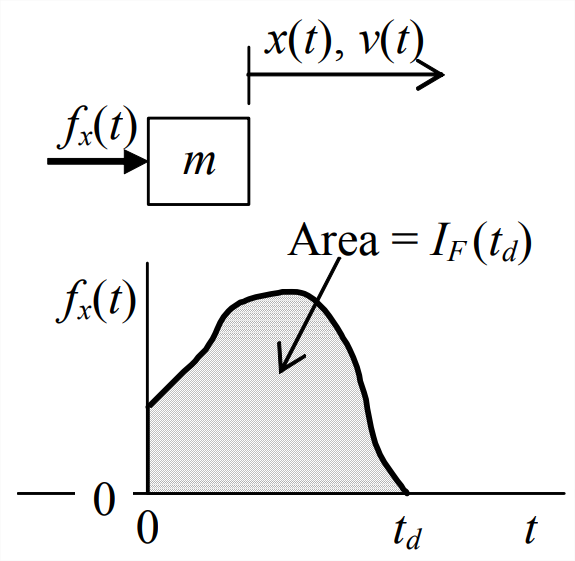8.2: Teorema de impulso-impulso para una partícula de masa que se traduce en una dirección
- Page ID
- 84528
En el dibujo a la derecha se muestra una partícula de masa sin restricciones sometida a fuerza que actúa solo en la\(x\) dirección. La ecuación del movimiento es

\[m \ddot{x}=f_{x}(t) \Rightarrow m \dot{v}=f_{x}(t) \nonumber \]
Integrar la ecuación de movimiento desde el tiempo cero a cualquier momento\(t>0\) da
en la que\(I_{F}(t)\) se encuentra el área bajo la historia del tiempo de la fuerza y se llama el impulso de la fuerza, con dimensiones de fuerza\(\times\) tiempo. Ecuación\(\ref{eqn:8.6}), the impulse-momentum theorem for a mass particle, states that the change of momentum equals the impulse. For a pulse, a force of limited duration as in the drawing on the previous page, we are generally interested in the total impulse \(I_{F}\left(t_{d}\right)\), que permanece sin cambios para\(t>t_{d}\).


